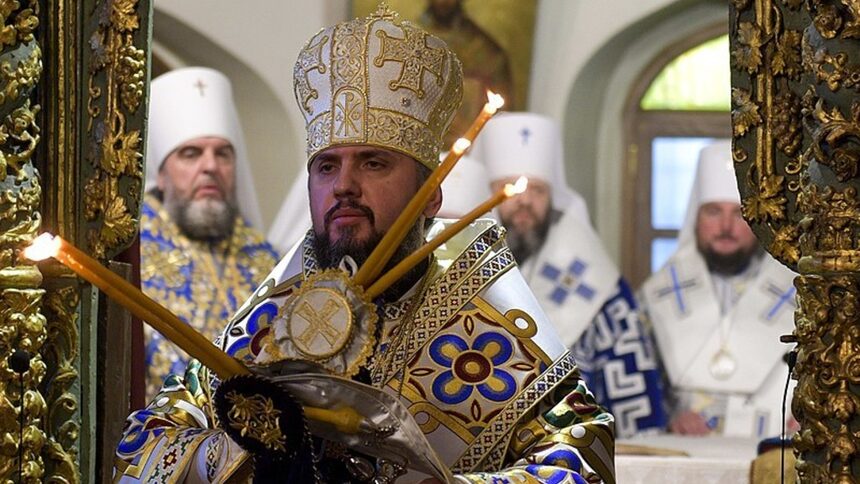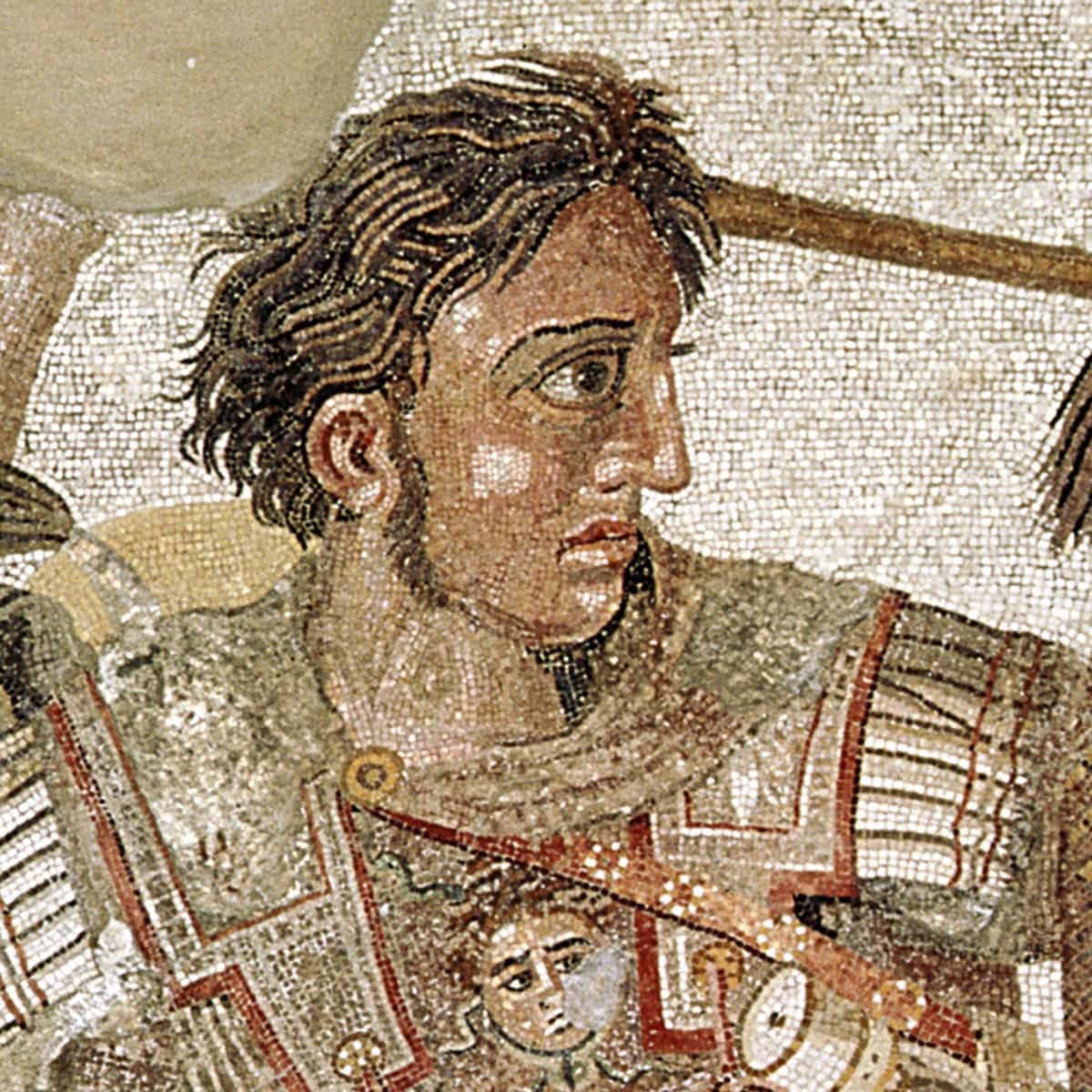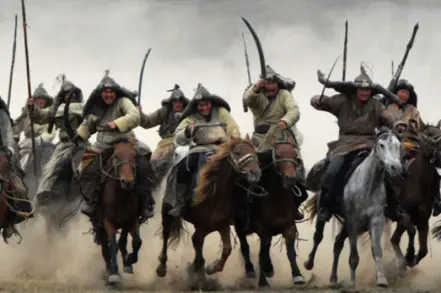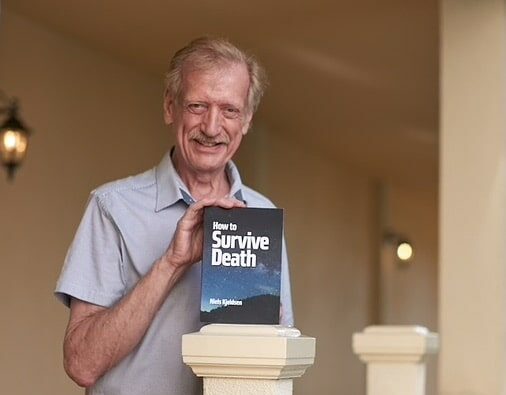Author: Epiphanius Metropolitan of Kyiv and all Ukraine
The idea of the “Russian World” is a heresy, and Moscow Patriarch Kirill has adopted a pagan and anti-Orthodox imperialist and nationalist ideology, which is why he must be condemned by the Orthodox world and removed from his post. This is what Epiphanius, Metropolitan of Kyiv and All Ukraine and Primate of the Orthodox Church of Ukraine, called for in a letter to Ecumenical Patriarch Bartholomew dated July 28. (The full text of the letter – below here.)
The first reaction of Vakhtang Kipshidze, deputy spokesman of the Moscow Patriarchate, was that this appeal came from something that is not even a church, but a schismatic structure whose claims should not be taken seriously. (The Orthodox Church of Ukraine was established in December 2018, and a month later Patriarch Bartholomew gave it a tomos granting autocephaly. The Russian Orthodox Church did not recognize this decision – note ed.) The OCU is trying to please the Ukrainian authorities and participate in the campaign against the entire Russian people, including against the head of the Russian Orthodox Church, he added.
The Moscow Patriarch then said that the claim of “malicious people” that the Russian Orthodox Church exists only for Russians, for Muscovites, does not correspond to reality. The explanation was that it is in more than 60 countries around the world and for him the Orthodox, wherever they live, are part of the Russian Orthodox Church.
Cyril made the comment in the “Christ the Savior” church in Moscow at a meeting with children from Ukraine – from the so-called Donetsk and Luhansk People’s Republics and from Kharkiv Oblast. For him, this meeting was “a great joy”, “because everything affecting Donbas, Luhansk region, Kharkiv region – where people are suffering today – worries me a lot and hurts my heart, because all the Orthodox people who live there – these are children of the Moscow Patriarchate”.
After Vladimir Putin’s attack on Ukraine, the patriarch touched on the topic several times in his sermons. According to him, the peoples of Russia and Ukraine are one whole, which external forces tried to separate, and Russia has never attacked other countries, but “only defends its borders”.
Kirill has been sanctioned by Canada and Great Britain, and the intervention of Hungarian Prime Minister Viktor Orbán prevented the European Union from doing the same at Lithuania’s proposal.
Here is the letter that the Ukrainian Metropolitan sent to Ecumenical Patriarch Bartholomew.
Your Holiness,
In accordance with the decision of the Council of Bishops of May 24 of this year I call on you to initiate examination and condemnation on a pan-Orthodox level of the activities of the Moscow Patriarch Kirill Gundyaev and the ethnophyletic and racist doctrine of the “Russian World” preached by him.
On February 24, 2022, the Russian Federation insidiously, without an official declaration of war, launched a full-scale military aggression against Ukraine. The war launched by Russia in the center of Europe as early as February 2014 is being waged with the aim of destroying Ukrainian statehood and striking with extreme cruelty. A true genocide is being committed against the Ukrainian people before the eyes of the whole world. The aggressor is destroying peaceful Ukrainian cities, shelling hospitals and schools, raping and torturing women and minors, killing and maiming children. Among those killed by the Russian troops are the clergy of the Orthodox Church of Ukraine, religious teachers from other faiths. About 200 religious buildings, mostly Orthodox churches, were completely or partially destroyed as a result of the Russian shelling.
Russia is a country that has linked its identity with Orthodoxy for centuries. But in recent decades, the Christian faith in Russia has been subjected to paganism – insidiously replaced by a civil religion that rests on the Orthodox tradition, but is alien to the spirit of the Gospel and the content of the Orthodox faith of the Holy Fathers. Many Russian soldiers who invaded our country identify with Orthodoxy. But the deeds done by the invaders testify to them as criminals who have lost their living connection with Christ and His Church.
Each murdered child, each raped woman, each destroyed residential building and temple is not only a war crime, but also an act of denying Christ, as a result of which the criminal finds himself outside the fertile fence of the Church. But the moral responsibility for the committed crimes is borne not only by the direct perpetrators, but also by their ideological inspirers – Moscow Patriarch Kirill and like-minded hierarchs, who for decades propagated, and now blessed, the ethnophyletic and racist doctrine of the “Russian World”.
Many of the elections for the patriarchal chair of Metropolitan Kirill (2009) connect certain hopes for the revival of church life. But today, when twelve and a half years have passed since Cyril occupied the Moscow see, it is obvious that the announced reforms did not take place and the only real achievements of the 16th Moscow patriarch were the concentration of power in the hands of one man with a complete degradation of the real church council and complete dependence of the Church on the Russian state.
Metropolitan, and later Patriarch Kirill, was never a standard for professing the Orthodox faith. Some theological statements of Bishop Cyril – for example, the identification of the Third Hypostasis of the Holy Trinity with the “Divine energy eternally originating from God the Father” – even caused controversy and temptations among the clergy of the Russian Church. Cyril’s almost complete indifference to theological problems kept him from completely falling into the realm of heresy. The situation changed when the hierarch, whose attention had long been focused on geopolitical problems, decided to participate in the creation of the doctrine of the “Russian World” – a nationalist ethnophyletic theory of the special role of the Russian nation and state in the world and in the Church.
On Orthodox Sunday, March 15 this year, the Declaration on the “Russian World” was promulgated, which was initially signed by more than 340 Orthodox theologians from around the world, whose number has now increased to a thousand. As noted in this Declaration, the “Russian World” is an unorthodox heretical doctrine, close to the teaching of ethnophiletism, condemned at the Council of Constantinople in 1872. “We reject the heresy of the “Russian World” and the shameful actions of the Russian authorities in allowing the war against Ukraine, caused by this vile doctrine, which has no justification – for the complicity of the Russian Orthodox Church, as actions deeply non-Orthodox, non-Christian,” noted the Orthodox theologians who signed the Declaration. Similar assessments were expressed in another public document – Open Address to the Heads of the Orthodox Churches.
While sharing most of the statements contained in the above Appeals, we also wish to draw Your Holiness’ attention to another heretical aspect of the “Russian World” doctrine that significantly distorts Orthodox anthropology. It is about denying the rights of peoples to historical self-determination or historical fatalism inherent in the doctrine of the “Russian world” in the interpretation of Patriarch Kirill. According to the latter’s mythological historical concept, Russians, Ukrainians and Belarusians supposedly belong to the common civilization of the “Russian World” and as such have no moral right to further historical self-determination. Their choice, made in the past, supposedly obligates them to be a part of the Russian world or the Russian state for the rest of their lives.
The denial of the freedom of entire peoples is combined in the worldview of Patriarch Kirill and his like-minded people with a racist theory in spirit, according to which Russia and the “Russian world” are something fundamentally better and higher than other nations, and Russia’s historical neighbors – Ukrainians and Belarusians – have the right to exist and have a future only as part of the Russian reality. Within this racist concept, which divides peoples and states into “real” and “artificial”, it is also quite logical in principle to deny the right of the people of Ukraine to full canonical church independence (autocephaly) and statehood.
At the same time, it is important to understand that the ideology of the modern Russian Orthodox Church poses a threat not only to Ukraine, but also to the entire Orthodox world. “Just as Russia invaded Ukraine, so the Moscow Patriarchate, headed by Patriarch Kirill, became an invader in the Orthodox Church, for example in Africa, causing division and discord,” noted the Orthodox theologians in the aforementioned Declaration.
It is important to realize the connection between the doctrine of the “Russian World” and the specific church decisions initiated by Patriarch Kirill in recent years – from the severance of Eucharistic communion with the Ecumenical Patriarchate (October 15, 2018) to the creation of the “Patriarchal Exarchy of Africa” . Armed aggression of the Russian Federation against Ukraine (2022). At least since October 2018, all actions of Patriarch Kirill have been subordinated to a specific political goal. He seeks to radically increase the presence of the Russian Orthodox Church outside of Russia, to weaken the Ecumenical Patriarchate and the Greek-speaking local churches as much as possible, and thus impose on the Orthodox world the hegemony and dictates of the Moscow Patriarch.
In the current situation, it is extremely important that the Catholic Church responds properly to the challenges arising from pagan Russian Orthodoxy. As the Gospel testifies, “every good tree bears good fruit, but a bad tree bears bad fruit” (Matthew 7:18). Acting according to this principle commanded by our Savior, the Church must collectively recognize that the tree that today bears the “fruits of war” is poisonous, that is, condemn the doctrine of the “Russian world” as heretical.
We call on Your Holiness and the Superiors of the Local Orthodox Churches to also look into the activities of Patriarch Cyril as soon as possible, related to his opposition to the Ecumenical Patriarchate and many Local Orthodox Churches, and if this activity is recognized as containing signs of schism, to bring the Patriarch to justice to canonical responsibility.
In view of the above, we ask Your Holiness and His Beatitude the Heads of the Local Orthodox Churches to canonically qualify several decisions of the Holy Synod of the Russian Orthodox Church, adopted in 2018 – 2021, which, in our opinion, do not correspond to the principles of Orthodox ecclesiology:
• a decision to interrupt (unilaterally) the Eucharistic communion with the Ecumenical Patriarchate, the Patriarchate of Alexandria, the Church of Cyprus and the Church of Greece;
• the decision to create – contrary to the canonical tradition and the sixth rule of the First Ecumenical Council – the church structures of the Moscow Patriarchate on the canonical territory of the ancient Patriarchate of Alexandria.
On behalf of the bishops of our Church and the numerous victims of Russia’s war against Ukraine, which the Patriarch of Moscow openly and unequivocally publicly approves and supports, we appeal to Your Holiness and the Heads of the Local Orthodox Churches with a request:
• to condemn the doctrine of the “Russian World” and recognize it as heretical;
• to qualify the actions of Patriarch Kirill in the canonical territory of the Patriarchate of Alexandria as schismatic;
• to deprive Kiril Gundyaev of the right to occupy the Moscow Patriarchate.
With sincere brotherly love in Christ, we ask Your Holiness and His Beatitude the Heads of the Local Orthodox Churches to continue offering their prayers for the suffering people of Ukraine and to grant the request expressed in this letter – objectively, in accordance with the teachings and sacred canons of the Church, to examine the activities of the current heads of the Russian Church.
On behalf of the Synod of Bishops of the Orthodox Church of Ukraine
Epiphanius
Metropolitan of Kyiv and all Ukraine
Primate of the Orthodox Church of Ukraine
Photo: Metropolitan Epiphany during the service in Istanbul in January 2019 at the recognition of a Ukrainian church that is not subordinate to the Moscow Patriarchate © president.gov.ua
















